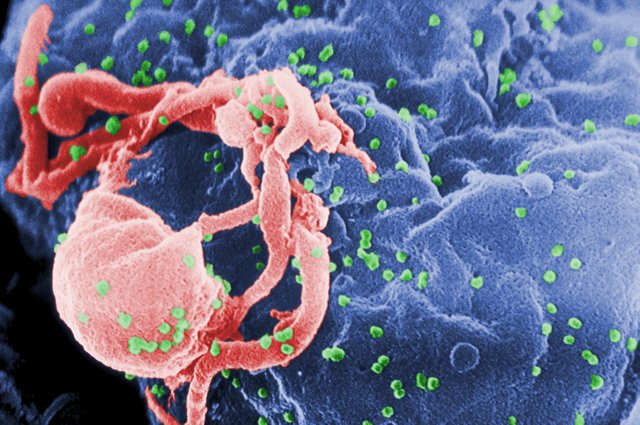Scientists are getting closer to being able to remove HIV from infected hosts
The human immunodeficiency virus is one of the best-known viruses to the general public, and is responsible for a while lot of deaths yearly. As we would expect, many scientists are working on different approaches to getting rid of the virus. We currently have some good treatment to stop the virus from spreading (and stop making the infected host get sicker), but we don’t have any way to actually get rid of the virus completely.

A scanning electron micrograph of the HIV-1. The green dots are the virus buds. Image by C. Goldsmith, posted as public domain.
A few months ago, a group of US scientists from the Lewis Katz School of Medicine at Temple University and the University of Pittsburgh published a paper where they used CRISPR-Cas9 to remove the virus. This works by editing genes, and effectively “silence” the targeted gene from getting expressed. CRISPR-Cas9 is pretty new, but has a huge potential in medicine, and this is one of the first big papers to really show the potential.
Anyway, back to the paper. The scientists infected mice with three different types of HIV; group 1 with HIV-1, group 2 with EcoHIV (the mouse equivalent of HIV-1), and group 3 was humanized mice that were infected with HIV-1. The humanized mice were engrafted with human immune cells, so they are a good indication as to how to project would work on a human.
The results were very good; the groups with HIV-1 had around 95 % of the RNA expression of the viral genes removed, while 96 % of these were removed from group 2. It is of course not 100 %, but it is a very good step in the right direction, and could potentially lead to a successful removal in the future. As with most viruses, having only a few percentages left can be devastating, and it can potentially spread, so this test is far from a cure.
The tests ran for 19 days on the mice, and the next step to see if this has the huge potential that many scientists think, is to move from mice to primates. These are more human-like, and will give a better knowledge about how this technique will work on humans. If that proves to be just a successful it might be attempted on humans in clinical trials, and maybe someday in the future this will end up as the first step on the road to curing HIV.
Thanks for reading! Leave a comment below If you got any questions of comments. If you are interested to learn more, be sure to click on the link in the 2.nd paragraph to access the full article. It is free of charge, but it is very complex unless you have a pretty good knowledge about medicine and genetics.